|
Books Should Be Free Loyal Books Free Public Domain Audiobooks & eBook Downloads |
|
|
Books Should Be Free Loyal Books Free Public Domain Audiobooks & eBook Downloads |
|
Literature |
|---|
|
Book type:
Sort by:
View by:
|
By: William Shakespeare (1564-1616) | |
|---|---|
 As You Like It
As You Like It
In a tiny French dukedom, a younger brother usurps his elder brother's throne. Duke Senior is banished to the Forest of Arden along with his faithful retainers, leaving his lovely daughter Rosalind behind to serve as a companion for the usurper's daughter, Celia. However, the outspoken Rosalind soon earns her uncle's wrath and is also condemned to exile. The two cousins decide to flee together and join Duke Senior in the forest. Meanwhile, a young nobleman, Orlando is thrown out of his home by his cruel older brother Oliver... | |
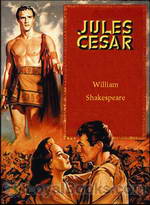 Julius Caesar
Julius Caesar
Though it's titled The Tragedy of Julius Caesar, the man himself appears only in five scenes in the entire play! However, such is his impact on the events that surrounded him that he still remains the central figure in this psychological drama that combines politics, honor, assassination, betrayal, the lust for power, patriotism and friendship. Set in 44 BC in ancient Rome, it is one of William Shakespeare's early Tragedies. First thought to have been performed in September 1599, William Shakespeare's original text or script have long vanished... | |
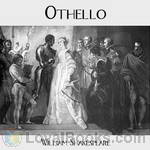 Othello
Othello
In seventeenth century Venice, a wealthy and debauched man discovers that the woman he is infatuated with is secretly married to a Moorish general in the Venetian army. He shares his grief and rage with a lowly ensign in the army who also has reason to hate the general for promoting a younger man above him. The villainous ensign now plots to destroy the noble general in a diabolical scheme of jealousy, paranoia and murder, set against the backdrop of the bloody Turkish-Venetian wars. This timeless tale, Othello The Moor of Venice was one of the ten famous tragedies that William Shakespeare wrote... | |
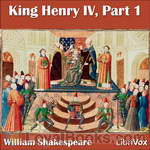 King Henry IV
King Henry IV
King Henry IV, Part 1 is the second of Shakespeare’s eight Wars of the Roses history plays, with events following those of King Richard II. As the play opens, King Henry IV (formerly Henry Bolingbroke) and Henry Percy (Hotspur) argue over the disposition of prisoners from the Battle of Holmedon. The King’s attitude toward Mortimer and the Percy family prompts them to plot rebellion. In the meantime, his son Prince Hal is living the low life in the company of Sir John Falstaff. As the time of battle nears, Prince Hal joins his father and is given a high command... | |
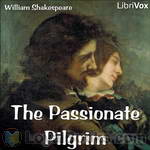 The Passionate Pilgrim
The Passionate Pilgrim
The Passionate Pilgrim was published by William Jaggard, later the publisher of Shakespeare’s First Folio. The first edition survives only in a single fragmentary copy; its date cannot be fixed with certainty since its title page is missing, though many scholars judge it likely to be from 1599, the year the second edition appeared with the attribution to Shakespeare. This version of The Passionate Pilgrim, contains 15 romantic sonnets and short poems. The works contained, while disputed as to authorship are in this writer’s most humble opinion, among the best of the age. | |
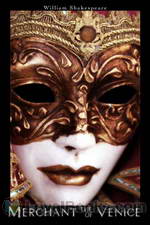 The Merchant of Venice
The Merchant of Venice
William Shakespeare's The Merchant of Venice was probably written between 1596 and 1598, and was printed with the comedies in the First Folio of 1623. Bassanio, an impoverished gentleman, uses the credit of his friend, the merchant Antonio, to borrow money from a wealthy Jew, Shylock. Antonio pledges to pay Shylock a pound of flesh if he defaults on the loan, which Bassanio will use to woo a rich heiress, Portia. A subplot concerns the elopement of Shylock's daughter Jessica with a Christian, Bassanio's friend Lorenzo... | |
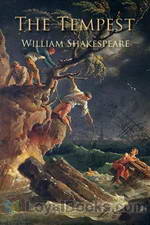 The Tempest
The Tempest
Banished from his own lands by a usurping brother, Prospero and his daughter Miranda have been living on a deserted island for years, until fate brings the brother within the range of Prospero's powers. Will he seek revenge, or reconcilement? | |
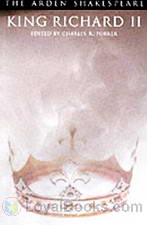 King Richard II
King Richard II
The Tragedy of King Richard II, by William Shakespeare, is the first of the history series that continues with Parts 1 and 2 of King Henry IV and with The Life of King Henry V. At the beginning of the play, Richard II banishes his cousin Henry Bolingbroke from England. Bolingbroke later returns with an army and the support of some of the nobility, and he deposes Richard. Richard is separated from his beloved Queen, imprisoned, and later murdered. By the end of the play, Bolingbroke has been crowned King Henry IV... | |
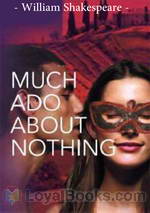 Much Ado About Nothing
Much Ado About Nothing
Written around the middle of his career, Much Ado About Nothing is one of Shakespeare's great festive comedies. The men are back from the war, and everyone is ready for romance. The dashing young Claudio falls for Hero, the daughter of Leonato, governor of Messina, and his friend Don Pedro helps him secure her affection. These youthful lovers are contrasted with the more experienced (and more cynical) Benedick and Beatrice, who have to be tricked into falling in love. Don Pedro's bastard brother, Don John, provides the intrigue, and the dimwitted constable Dogberry provides the laughs. | |
 The Taming of the Shrew
The Taming of the Shrew
The Taming of the Shrew is one of Shakespeare's earliest comedies, and was inspired by classical Roman comedy and the Italian commedia dell'arte. Baptista Minola, a rich gentleman of Padua, has two daughters: Katherina, renowned for her sharp tongue, and Bianca, who is sought after by multiple suitors. Baptista decides that Bianca cannot marry until her elder sister finds a husband. Enter Petruchio, who has come to "wive it wealthily in Padua," and who is convinced by Bianca's suitors to woo Katherina. The play ultimately poses the question of who is the bigger shrew: Kate or Petruchio. The subplot involves the subterfuge employed by Lucentio to woo the lovely Bianca. | |
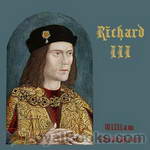 Richard III
Richard III
Richard III is an early history play probably written and performed around 1592-93. It is the culmination of Shakespeare's earlier three plays about Henry VI, and chronicles the bloody career of Richard, Duke of Gloucester. As the play opens, the Wars of the Roses are over, King Edward IV (Richard's brother) is on the throne, and all is ostensibly well. The problem? Richard wants to be king - and he'll stop at nothing to realize his ambition. | |
 All's Well That Ends Well
All's Well That Ends Well
Despite its optimistic title, Shakespeare's All's Well That Ends Well has often been considered a "problem play." Ostensibly a comedy, the play also has fairy tale elements, as it focuses on Helena, a virtuous orphan, who loves Bertram, the haughty son of her protectress, the Countess of Rousillon. When Bertram, desperate for adventure, leaves Rousillon to serve in the King's army, Helena pursues him. | |
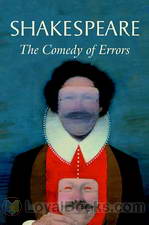 The Comedy of Errors
The Comedy of Errors
The Comedy of Errors is one of William Shakespeare's earliest plays, believed to have been written between 1592 and 1594. It is his shortest and one of his most farcical comedies, with a major part of the humour coming from slapstick and mistaken identity, in addition to puns and word play. The Comedy of Errors tells the story of two sets of identical twins that were accidentally separated at birth. Antipholus of Syracuse and his servant, Dromio of Syracuse, arrive in Ephesus, which turns out to be the home of their twin brothers, Antipholus of Ephesus and his servant, Dromio of Ephesus... | |
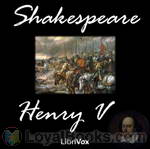 Henry V
Henry V
After the turmoil and uncertainty of Henry IV a new era appears to dawn for England with the accession of the eponymous Henry V. In this sunny pageant, the Chorus guides us along Henry's glittering carpet ride of success as the new king completes his transformation from rebellious wastrel to a truly regal potentate. Of course, there is an underlying feeling that the good times won't last, and this is all the more reason to enjoy the Indian summer before the protracted and bitter fall of the house of Lancaster. | |
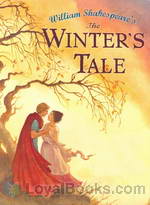 The Winter's Tale
The Winter's Tale
Mad with jealousy, King Leontes of Sicilia orders his best friend Polixenes killed, his child abandoned, and his wife put on trial for adultery. Sixteen years later, Perdita, raised as a shepherd's daughter, falls in love with Polixenes's royal son and returns to her father's kingdom. | |
 Measure For Measure
Measure For Measure
Generally considered one of Shakespeare's problem plays, Measure for Measure examines the ideas of sin and justice. Duke Vincentio turns Vienna's rule over to the corrupt Angelo, who sentences Claudio to death for having impregnated a woman before marriage. His sister Isabella, a novice nun, pleads for her brother's life, only to be told that he will be spared if she agrees to relinquish her virginity to Angelo. | |
 Love's Labour's Lost
Love's Labour's Lost
Love's Labour's Lost is an early comedy by William Shakespeare. Ferdinand, the King of Navarre, and his three friends take a vow of study and seclusion for three years, during which they are forbidden to see or speak to women. Their vows are immediately tested by the arrival of the Pricess of France and her three ladies to the King's court. | |
 Titus Andronicus
Titus Andronicus
Titus Andronicus may be Shakespeare's earliest tragedy; it is believed to have been written in the early 1590s. It depicts a Roman general who is engaged in a cycle of revenge with his enemy Tamora, the Queen of the Goths. The play is by far Shakespeare's bloodiest work. It lost popularity during the Victorian era because of its gore, and it has only recently seen its fortunes revive. | |
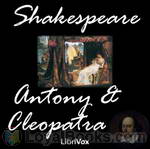 Antony and Cleopatra
Antony and Cleopatra
Antony and Cleopatra is a tragedy by William Shakespeare, believed to have been written sometime between 1603 and 1607. It was first printed in the First Folio of 1623. The plot is based on Thomas North's translation of Plutarch's Life of Marcus Antonius and follows the relationship between Cleopatra and Mark Antony from the time of the Parthian War to Cleopatra's suicide. The major antagonist is Octavius Caesar, one of Antony's fellow triumviri and the future first emperor of Rome. The tragedy is a Roman play characterized by swift, panoramic shifts in geographical locations and in registers, alternating between sensual, imaginative Alexandria and the more pragmatic, austere Rome. | |
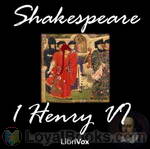 Henry VI
Henry VI
Henry VI, Part 1 is a history play by William Shakespeare, believed to have been written in 1591, and set during the lifetime of King Henry VI of England. Whereas 2 Henry VI deals with the King's inability to quell the bickering of his nobles, and the inevitability of armed conflict, and 3 Henry VI deals with the horrors of that conflict, 1 Henry VI deals with the loss of England's French territories and the political machinations leading up to the Wars of the Roses, as the English political system is torn apart by personal squabbles and petty jealousy. | |
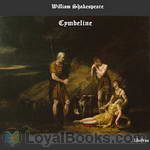 Cymbeline
Cymbeline
Cymbeline is one of Shakespeare's late romances, which (like The Tempest and The Winter's Tale) combines comedy and tragedy. Imogen, the daughter of King Cymbeline of Britain, angers her father when she marries Posthumus, a worthy but penniless gentleman. The King banishes Posthumus, who goes to Rome, where he falls prey to the machinations of Iachimo, who tries to convince him that Imogen will be unfaithful. Meanwhile, the Queen (Imogen's stepmother) plots against her stepdaughter by trying to plan a match between Imogen and her worthless son Cloten. | |
 The Two Gentlemen of Verona
The Two Gentlemen of Verona
The Two Gentlemen of Verona is the earliest comedy written by Shakespeare (and possibly his first play), probably written around 1590-91. It focuses on two friends, Valentine and Proteus, whose friendship is disrupted by their mutual passion for the lovely Silvia. Proteus jilts Julia in order to pursue Silvia; she responds by enlisting the help of her maid Lucetta to dress as a boy and go after Proteus. The play also includes some wonderfully comic supporting characters, particularly Launce and his scene-stealing dog Crab. | |
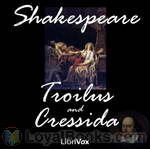 Troilus and Cressida
Troilus and Cressida
Troilus and Cressida is Shakespeare's "problem" play about the Trojan War. As the opening Chorus tells us, the play "begins in the middle" of the epic conflict, and counterpoints the drama of battle with the romance of the title characters. Just as Agamemnon and his Greek forces (particularly the smooth-tongued Ulysses) attempt to woo the invincible Achilles to resume fighting on their side, the Trojan go-between Pandarus tries to bring together Troilus, a son of King Priam, with his niece, the lovely Cressida. | |
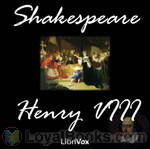 Henry VIII
Henry VIII
This is Shakespeare's dutiful tribute to one of the most imposing and terrifying rulers in European history. The kingdom trembles as the giant monarch storms through his midlife crisis, disposing of the faithful Katharine of Aragon and starting a new life and, the king hopes, a line of succession with the captivating young Anne Bullen. Unlike his predecessors, Henry has no doubt about the security of his tenure on the throne, and dominates the royal court with absolute authority. The extent of the King's power is graphically illustrated by the fate of the Duke of Buckingham, who goes calmly to execution while deploring, not the unjust despotism of the king... | |
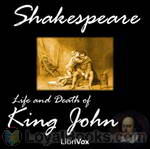 King John
King John
The Life and Death of King John, a history play by William Shakespeare, dramatises the reign of John, King of England (ruled 1199–1216), son of Henry II of England and Eleanor of Aquitaine and father of Henry III of England. It is believed to have been written in the mid-1590s but was not published until it appeared in the First Folio in 1623. John (24 December 1166 – 19 October 1216), also known as John Lackland or Softsword, was King of England from 6 April 1199 until his death. His reign... | |
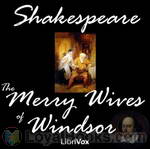 The Merry Wives of Windsor
The Merry Wives of Windsor
The Merry Wives of Windsor is a comedy by William Shakespeare, first published in 1602, though believed to have been written prior to 1597. It features the fat knight Sir John Falstaff, and is Shakespeare's only play to deal exclusively with contemporary Elizabethan era English middle class life. | |
 Timon of Athens
Timon of Athens
The Life of Timon of Athens is a play by William Shakespeare about the fortunes of an Athenian named Timon (and probably influenced by the philosopher of the same name, as well), generally regarded as one of his most obscure and difficult works. Originally grouped with the tragedies, it is generally considered such, but some scholars group it with the problem plays. The play has caused considerable debate among scholars. It is oddly constructed, with several lacunae (gaps) and for this reason is often described as unfinished, multi-authored, and/or experimental... | |
By: Charles Dickens | |
|---|---|
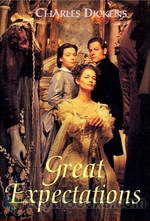 Great Expectations
Great Expectations
From the opening passage itself of Great Expectations by Charles Dickens, the reader is drawn into the world of the hero, Pip, who is at that time, seven years old. The author creates an unforgettable atmosphere: the gloom of the graveyard, the melancholy of the orphan boy, the mists rising over the marshes and the terrifying appearance of an escaped convict in chains. Told in first person (one of the only two books that Dickens used this form for, the other being David Copperfield) Great Expectations is a classic coming of age novel, in which we trace the growth and evolution of Pip or Philip Pirrip to give his full name... | |
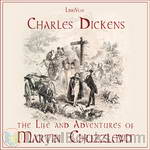 The Life and Adventures of Martin Chuzzlewit
The Life and Adventures of Martin Chuzzlewit
Dickens thought it was “in a hundred points, immeasurably the best” of his stories. Yet it was also one of his greatest flops. Compared to his other novels, The Life and Adventures of Martin Chuzzlewit was a dismal failure in terms of sales and the main reason for Dickens falling out with his long term publisher Chapman & Hall. They invoked a penalty clause and demanded that he pay back a portion of the advance which he refused. Martin Chuzzlewit was also dimly received in Dickens friendly America... | |
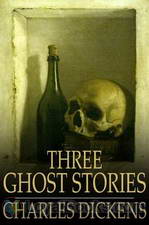 Three Ghost Stories
Three Ghost Stories
As a gifted writer with a strong interest in supernatural phenomena, Charles Dickens produced a string of ghost stories with enduring charm. Three of them are presented here, of which The Signal Man is one of the best known. Though quite different from his most celebrated realistic and humorous critical novels, these ghost stories, Gothic and grotesque as they are, are of good portrayal, and worth a read/listen. Summary by Vivian Chan | |
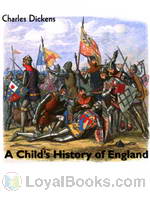 A Child's History of England
A Child's History of England
A Child’s History of England first appeared in serial form, running from January 25, 1851 to December 10, 1853 and was first published in three volume book form in 1852, 1853, and 1854. Dickens dedicated the book to “My own dear children, whom I hope it may help, bye and bye, to read with interest larger and better books on the same subject”. The history covered the period between 50 BC and 1689, ending with a chapter summarising events from then until the ascension of Queen Victoria. | |
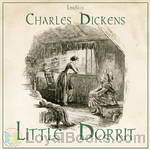 Little Dorrit
Little Dorrit
Originally published in monthly installments between 1855 and 1857, the novel focuses on the various forms of imprisonment, both physical and psychological, while also concentrating on dysfunctional family ties. Accordingly, Dickens avidly criticizes the social deficiencies of the time including injustice, social hypocrisy, the austerity of the Marshalsea debtors’ prison, and bureaucratic inefficiency. The novel kicks off with the introduction of William Dorrit, the oldest prisoner in the Marshalsea prison, who is also referred to as The Father of the Marshalsea... | |
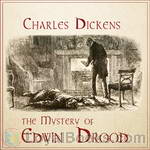 The Mystery of Edwin Drood
The Mystery of Edwin Drood
The Mystery of Edwin Drood is the final novel by Charles Dickens. It is a mystery indeed; the serial novel was just half completed at the time of Dickens’ death – leading to much speculation how it might have ended.The novel is named after Edwin Drood, one of the characters, but it mostly tells the story of his uncle, a choirmaster named John Jasper, who is in love with his pupil, Rosa Bud. Miss Bud is Drood’s fiancée, and has also caught the eye of the high-spirited and hot-tempered Neville Landless! Landless comes from Ceylon with his twin sister, Helena... | |
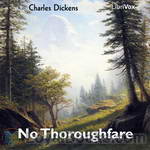 No Thoroughfare
No Thoroughfare
Two boys from the Foundling Hospital are given the same name, with disastrous consequences in adulthood. Two associates, wishing to right the wrong, are commissioned to find a missing heir. Their quest takes them from fungous wine cellars in the City of London to the sunshine of the Mediterranean — across the Alps in winter. Danger and treachery would prevail were it not for the courage of the heroine and the faithful company servant. The story contains crafted descriptions, well-drawn and diverse... | |
 A House to Let
A House to Let
A House to Let is a novella originally published in 1858 in the Christmas edition of Dickens’ Household Words magazine. Each of the contributors wrote a chapter (stories within a story, and in the case of Adelaide Anne Procter, as a story in verse) and the whole was edited by Dickens. The plot concerns an elderly woman, Sophonisba, who notices signs of life in a supposedly empty dilapidated house (the eponymous “House to Let”) opposite her own, and employs the efforts of an elderly admirer, Jabez Jarber, and her servant, Trottle, to discover what is happening within. | |
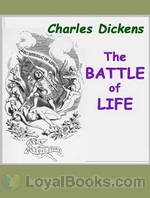 The Battle of Life
The Battle of Life
While "The Battle of Life" is one of Charles Dickens' Christmas Books - his annual release of a story just before Christmas - this one breaks the tradition by not being concerned with Christmas. Rather, its subtitle, "A Love Story", reveals more of the plot. The major events of this book take place on land that once was a battleground. That is just a backdrop for Dickens' idea of the real battle of life - finding and winning the right partner, so that life will go on to the next generation. The family that lives there is rather confused in its affections and intentions regarding who should end up with whom... | |
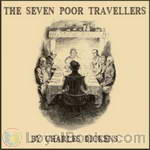 The Seven Poor Travellers
The Seven Poor Travellers
One of Dickens’ Christmas stories, this was first published as part of the Christmas number of Household Words for 1854. The first chapter relates Dickens’ visit to the ancient Richard Watts’s Charity at Rochester. The second chapter is the touching story of “Richard Doubledick”, which Dickens supposedly told the travellers, and Dickens’ journey home on Christmas morning provides the short concluding chapter. | |
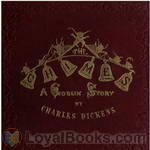 The Chimes
The Chimes
The Chimes: A Goblin Story of Some Bells that Rang an Old Year Out and a New Year In is the second of Charles Dickens' Christmas books, published in 1844. Its contemporary setting is the "Hungry Forties", a time of social and political unrest, and the book has a strong moral message. It remained popular for many years, although its fame has since been eclipsed by that of A Christmas Carol, the first of the series. Our hero Toby ("Trotty") Veck is a poor but hard-working man, whose beloved daughter Meg is due to marry on New Year's Day... | |
 The Haunted Man and the Ghost's Bargain
The Haunted Man and the Ghost's Bargain
The Haunted Man and the Ghost’s Bargain, A Fancy for Christmas-Time, (better known as The Haunted Man and the Ghost’s Bargain) is a novella by Charles Dickens first published in 1848. It is the fifth and last of Dickens' Christmas novellas. The story is more about the spirit of the holidays than about the holidays themselves, harking back to the first of the series, A Christmas Carol. The tale centers around a Professor Redlaw and those close to him. | |
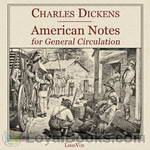 American Notes for General Circulation
American Notes for General Circulation
American Notes for General Circulation is a travelogue by Charles Dickens detailing his trip to North America from January to June, 1842. While there he acted as a critical observer of these societies almost as if returning a status report on their progress. This can be compared to the style of his Pictures from Italy written four years later, where he wrote far more like a tourist. His American journey was also an inspiration for his novel Martin Chuzzlewit. | |
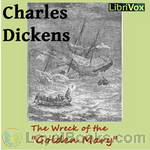 The Wreck of the Golden Mary
The Wreck of the Golden Mary
A short story of a ship wreck in 1851 trying to round Cape Horn on its way to the California gold fields. Poignant and well written. ( | |
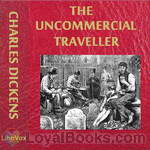 The Uncommercial Traveller
The Uncommercial Traveller
The Uncommercial Traveller is a collection of literary sketches and reminiscences written by Charles Dickens. In 1859 Dickens founded a new journal called All the Year Round and the Uncommercial Traveller articles would be among his main contributions. He seems to have chosen the title and persona of the Uncommercial Traveller as a result of a speech he gave on the 22 December 1859 to the Commercial Travellers' School London in his role as honorary chairman and treasurer. The persona sits well with a writer who liked to travel, not only as a tourist, but also to research and report what he found; visiting Europe, America and giving book readings throughout Britain... | |
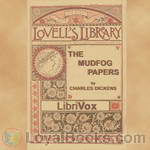 Mudfog and Other Sketches
Mudfog and Other Sketches
The Mudfog Papers was written by Victorian era novelist Charles Dickens and published from 1837–38 in the monthly literary serial Bentley's Miscellany, which he then edited. They were first published as a book as 'The Mudfog Papers and Other Sketches. The Mudfog Papers relates the proceedings of the fictional 'The Mudfog Society for the Advancement of Everything', a Pickwickian parody of the British Association for the Advancement of Science founded in York in 1831, one of the numerous Victorian learned societies dedicated to the advancement of Science... | |
 Pictures from Italy
Pictures from Italy
e: Dickens takes time off his novels to give an account of travels which he and his family undertook in France and Italy. There are vivid descriptions of the places, but also of the people and their lives. | |
By: Sir Arthur Conan Doyle (1859-1930) | |
|---|---|
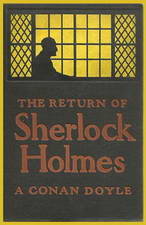 The Return of Sherlock Holmes
The Return of Sherlock Holmes
A young gambler is found shot dead in a closed room. Dr. Watson, who still mourns the disappearance of his famous friend is intrigued enough to step out of his house and take a look at the crime scene. A crowd has gathered there, curiously gazing up at the room where the crime is supposed to have taken place. Watson inadvertently jostles against an elderly, deformed man and knocks a stack of books from the fellow's hand. The man curses Watson vilely and disappears into the throng. It suddenly occurs to Watson that one of the books that he had helped the stranger pick up had seemed familiar... | |
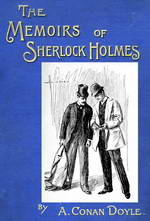 The Memoirs of Sherlock Holmes
The Memoirs of Sherlock Holmes
For more than a century and a quarter, fans of detective fiction have enjoyed the doings of the iconic sleuth, Mr. Sherlock Holmes. In the company of his faithful companion, Dr Watson, Holmes has consistently delighted generations of readers. Created by a Scottish writer and physician, Sir Arthur Conan Doyle, this immortal private eye has solved cases for kings and commoners, lovely damsels and little old ladies, engineers and country squires and a legion of others who come to him in distress and perplexity... | |
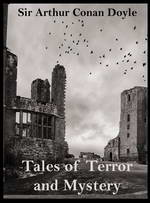 Tales of Terror and Mystery
Tales of Terror and Mystery
Though Sir Arthur Conan Doyle is best known for his detective stories, he also wrote other short stories which are masterpieces of mystery and suspense. In some of the stories in “Tales of Terror and Mystery”, a suppressed uneasiness gradually builds up and evolves into sheer terror. In others, the story line unexpectedly changes and comes to a horrific conclusion. Sit back in the comfort of your armchair and let yourself be transported to the strange but compelling world created by Sir Arthur Conan Doyle. | |
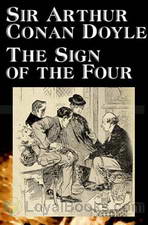 The Sign of the Four
The Sign of the Four
A secret shared by four convicts and two prison guards, a daughter in search of her missing father, a strange gift of a single pearl received every year, a fabulous treasure buried in the ancient Agra Fort in India, an eccentric detective being consulted to solve a deadly puzzle. All these events are set against the turbulent backdrop of the Great Indian Mutiny of 1857 in the second Sherlock Holmes novel by Sir Arthur Conan Doyle, The Sign of the Four. Mary Morstan, a lovely young woman, comes to the Baker Street lodgings shared by Holmes and Dr Watson... | |
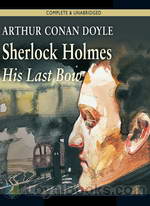 His Last Bow
His Last Bow
The disappearance of a German spy and the gathering storm that foretells the prelude to World War I is what greets you in this riveting book. The further you read the more mysteries unfold like secret submarine plans with some pages missing found in the hands of a corpse. There's also family insanity in Cornwall, a dead Spaniard and mafia hiding in an empty London flat. His Last Bow was published in the Strand Magazine circa 1908 and included several other short stories as well. Even during Sir Arthur Conan Doyle's own lifetime, Holmes had acquired cult status... | |
 The Valley of Fear
The Valley of Fear
Doyle's final novel featuring the beloved sleuth, Sherlock Holmes, brings the detective and his friend to a country manor where they are preceded by either a murder or a suicide. A secretive organization lies culprit and an infiltration of it is in order. | |
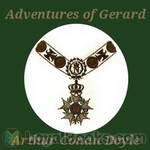 The Adventures of Gerard
The Adventures of Gerard
These lesser known stories were penned by Conan Doyle during the period between killing off Sherlock Holmes in 1893 and reluctantly resurrecting him some ten years later. The swashbuckling, eponymous hero, Etienne Gerard, is one of Napoleon's gallant French Hussars, who considers himself the finest of them all. Through these "Boys Own Adventures", Conan Doyle pokes gentle fun at both the French and the English. This is the second volume containing eight adventures. | |
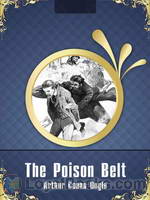 The Poison Belt
The Poison Belt
Three years after the events that took place in The Lost World, Professor Challenger urgently summons his fellow explorers (Professor Summerlee, Lord John Roxton, and reporter E.D. Malone) to a meeting. Oddly, he requires each to bring an oxygen cylinder with him. What he soon informs them is that from astronomical data and just-received telegraphs of strange accidents on the other side of the world, he has deduced that the Earth is starting to move through a region of space containing something poisonous to humankind... | |
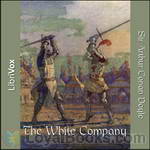 The White Company
The White Company
Set during the Hundred Years’ War with France, The White Company tells the story of a young Saxon man who is learning what it is to be a knight. Raised by Cistercian Monks and rejected by a violent elder brother, Alleyn Edricson takes service with one of the foremost knights in the country. When Alleyn falls in love with the knight’s daughter, he must prove himself to be a courageous and honourable knight before he can win her hand. Alleyn and his friends set forth with the other men-at-arms to join Prince Edward in Bordeaux, from where they will take part in the Prince’s campaign into Spain... | |
By: Jules Verne (1828-1905) | |
|---|---|
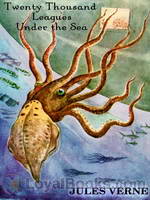 Twenty Thousand Leagues Under the Sea
Twenty Thousand Leagues Under the Sea
An early science fiction novel written by the second most translated author, French writer Jules Verne, the classic tale depicts an incredible sea expedition on board a state-of-the-art submarine. First published in 1870 and a part of the Voyages Extraordinaires series, the novel is regarded as one of the most thrilling adventure stories and one of Verne’s greatest pieces of work. Immersed in themes of exploration, avant-garde technology, and man’s insatiable desire for knowledge and scientific progression, Twenty Thousand Leagues Under the Sea has been an influence for many writers as well as an inspiration for numerous film adaptations... | |
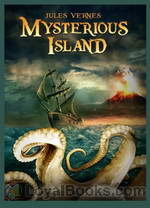 The Mysterious Island
The Mysterious Island
The Mysterious Island is another exquisite novel written by the master of adventure writing, Jules Verne. The novel has been seen as the sequel to two other famous novels written by the same author: Twenty Thousand Leagues Under the Sea and In Search of the Castaway. The story revolves around five Americans who live in a dark and harsh environment as prisoners of the American Civil War. Depleted by famine and death all around them, the five war prisoners take a big risk and escape by hijacking a hot air balloon... | |
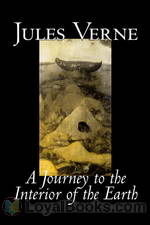 A Journey to the Interior of the Earth
A Journey to the Interior of the Earth
A historical manuscript penned by a medieval Norse poet. A mysterious code. Three intrepid explorers. A subterranean world filled with prehistoric creatures and proto-humans. These are some of the brilliant ideas that are superbly blended in A Journey to the Interior of the Earth by Jules Verne. Jules Verne, the French writer who created several works of science fiction, adventure stories and very popular novels, wrote A Journey to the Interior of the Earth in 1864. Some of his other books explore different aspects of geography, space and time travel... | |
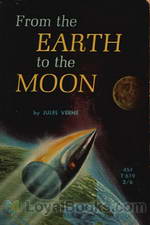 From the Earth to the Moon
From the Earth to the Moon
One of the earliest examples of literature written in the science fiction genre, From the Earth to the Moon is a part of the Voyages Extraordinaires series by French novelist Jules Verne. Written more than a century before the Apollo mission, Verne’s classic is somewhat a prophetic novel of man’s travel to the moon with its thorough and descriptive detail. A remarkable blend of action, humor, science, and audacious schemes, the timeless classic is sure to fascinate with its unique vision of lunar exploration... | |
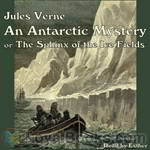 An Antarctic Mystery or The Sphinx of the Ice Fields
An Antarctic Mystery or The Sphinx of the Ice Fields
A wonderful coming together of two writers who wrote their books more than half a century apart. Neither of them had ever visited the remote islands they were writing about yet they provided inspiration for a couple of exciting adventure tales. In 1838, Edgar Allan Poe published The Narrative of Arthur Gordon Pym of Nantucket. It was the only complete novel published by the American author. It was the story of a young boy who stows away on board a whaling ship and it goes on to relate the events that follow... | |
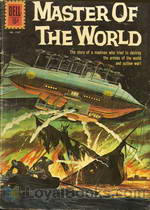 The Master of the World
The Master of the World
Published in 1904, The Master of the World is the penultimate novel in the Voyages Extraordinaires series, by renowned French novelist and pioneer of science fiction, Jules Verne. The novel acts as a sequel to Verne’s novel Robur the Conqueror, and consequently brings back some of its most notable characters, including the brilliant, yet villainous inventor Robur. Set in the summer of 1903, the adventure kicks off when a string of enigmatic events have been reported in the western part of North Carolina, leaving residents in fear of a possible volcanic eruption, even though the Blue Ridge Mountains are known to be non-volcanic ... | |
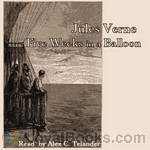 Five Weeks in a Balloon
Five Weeks in a Balloon
First published in 1863, Five Weeks in a Balloon depicts an insightful journey undertaken by a group of intrepid explorers into the partly uncharted African continent, as they aim to explore its exotic wonders. Apart from concentrating on themes including exploration, loyalty, friendship, determination, and honor, the novel also offers an endearing set of jovial characters and vivid imagery. Furthermore, the novel is the first book in Verne’s distinguished Voyages Extraordinaires series. The adventure begins when Dr... | |